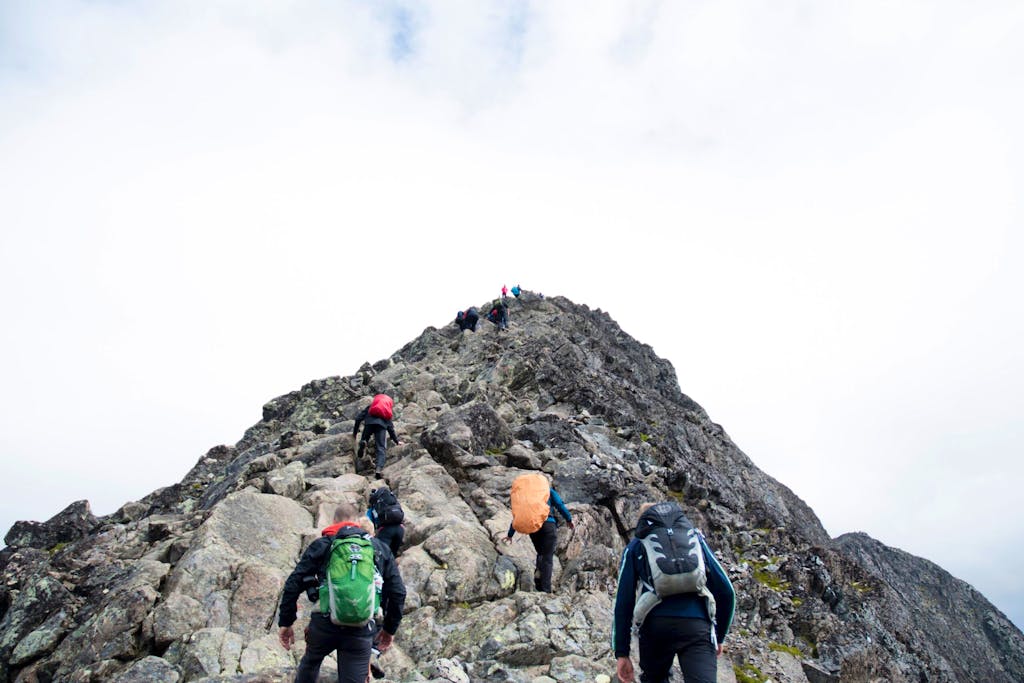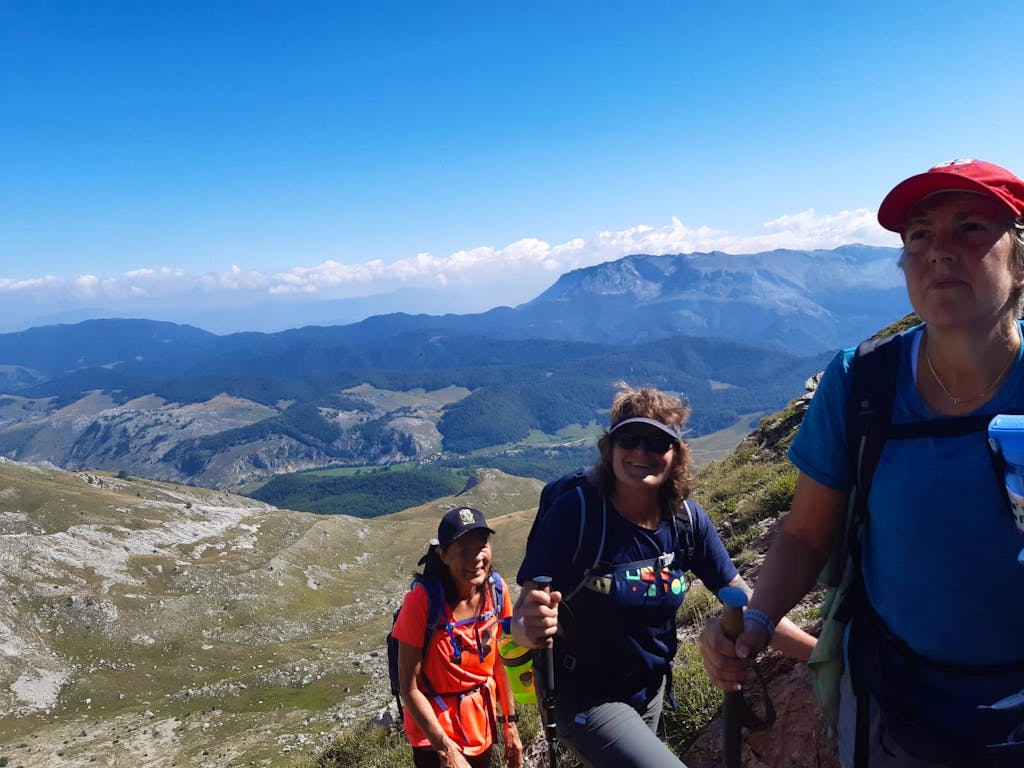Whether you’re heading out for a simple day hike or traveling to the far side of the planet to trek an iconic trail, knowing how to dress is a crucial part of staying comfortable. Packing the wrong clothes could leave you ill equipped to deal with changing weather conditions, and result in a miserable travel experience. But those kinds of situations can be avoided altogether with the help of a good layering system. If you have the proper apparel, you’ll find yourself ready for anything Mother Nature can throw at you, and avoid over packing at the same time. Here’s what you need to know.
Overview
- Start with Base Layers
- Add an Insulating Layer
- Finally, Top with a Shell Jacket
- Put Your Clothes Together

1. Start with Base Layers
Every good layering system begins with a proper set of baselayers. These are the articles of clothing that sit closest to the skin, playing a vital role in regulating your temperature and managing moisture. Made from technical fabrics designed to wick perspiration off of your skin, these quick-drying garments can keep you warm in cold conditions and help you stay cooler when things start to heat up too.
Most baselayers are made from either merino wool or proprietary synthetic materials such as Patagonia’s Capilene. Both options perform well, although merino has the advantage of having natural anti-microbial properties that allow it to avoid collecting foul odors. This comes in handy when you find yourself wearing the same clothes for multiple days, which happens frequently on longer trips.
Baselayer tops can come with either long or short sleeves. In fact, it is best to bring one of each depending on the destination. Those shirts can be form-fitting or more relaxed depending on your preference, although I’ve found that those that fit close to the body provide the best level of performance. Baselayer bottoms fit snugly and run the length of your legs, adding warmth to the lower half of your body too.
2. Add an Insulating Layer
The next component of your layering system plays the all-important role of providing warmth through insulation. Its main purpose is to trap heat close to the body, while still allowing moisture to escape. This allows you to stay warmer and more comfortable even as the temperature starts to drop.
Insulating layers come in a variety of styles, and which one works best for you is a matter of personal taste. Some travelers prefer a classic fleece pullover, while others opt for one that uses down as its insulating material. A lightweight merino wool sweater is also an option depending on just how cold the temperatures at your destination will actually be.
Personally, I prefer to use merino when conditions will be cool, but not excessively cold. When the mercury starts to plummet however, it is tough to beat a good down jacket, which in addition to being very warm is also lightweight and highly packable. Just be sure the jacket you are using utilizes waterproof down, which improves performance dramatically in wet conditions.
3. Finally, Top with a Shell Jacket
The final piece to any layering system is an outer shell that is designed to keep bad weather at bay. This layer typically comes in the form of a lightweight technical jacket that is treated with a durable water repellent finish that causes water to bead up on the surface and roll right off. In this way, the jacket offers protection from rain and snow, while also preventing wind from penetrating its interior as well.
A shell jacket serves as a shield for your inner layers, allowing them to stay dry when conditions take a turn for the worse. But this outer layer must also let water vapor created from evaporating perspiration escape, otherwise the sweat will condense on the inside of the jacket, causing your insulating layer to become damp. That’s why the technical fabrics used in making these jackets tend to be highly breathable as well, with the ability to repel moisture from the outside while still allowing it to escape from the inside too.
There are a wide variety of shell jackets on the market to choose from, with some offering higher levels of water and wind resistance at the expense of breathability, while others take the opposite approach. The most versatile jackets manage to strike a balance while remaining lightweight and easy to fit into our bags too.
If you are visiting an extremely wet or snowy destination, you may also consider adding a pair of shell pants to your packing list. They serve the same purpose as a shell jacket, delivering a level of protection from wind, rain, and snow for your legs too. In most instances, a regular pair of hiking pants, paired with a baselayer, will suffice, but the option of adding an outer shell is there if you need it.
4. Put Your Clothes Together
When all of the components of a layering system are brought together they bring a level of performance and versatility that every traveler can appreciate. The pieces can be mixed and matched as needed to provide the highest level of comfort to match the current weather conditions. For instance, on warmer days a baselayer shirt on its own will do fine. But as the temperature begins to drop, you can quickly add an insulating layer if needed. And when rain, snow, and wind set it, breakout the shell jacket for added protection from the elements.
With these articles of clothing in your closet you’ll find you’re pretty well equipped to handle just about any conditions. They also help to make it incredibly easy to pack for a trip too.

About Kraig Becker

Kraig Becker is a freelance outdoor and adventure travel writer based in Nashville, TN. He is an avid hiker, climber, and mountain biker who enjoys any opportunity to be outdoors. A self-confessed gear junkie, he often writes about the best new equipment for use in the outdoors and while traveling. Some of his own adventures have taken him up Mt. Kilimanjaro in Africa, across Mongolia on horseback, and into the Amazon by riverboat.
The Right Hiking Gear Make All The Difference!
What’s your favorite hiking gear? Share your stories and pics and tag #mtsobek or #mountaintravelsobek on Instagram for a chance to get featured on our Instagram Stories!
For more on our hiking & trekking adventures, explore our popular destinations. Make this a year to remember, with MT Sobek and a group of like-minded adventurers, one step at a time.
Further reading…
- Best Hiking Adventures for Every Continent
- Top 7 Expert Adventure Picks for 2023
- 20 Best Hikes for 2023
Ask an Expert
We want you to have the best adventure, so don’t hesitate to call our expert team of adventure specialists at 800-974-0300 to learn more. Or click the button to use our online contact form.
